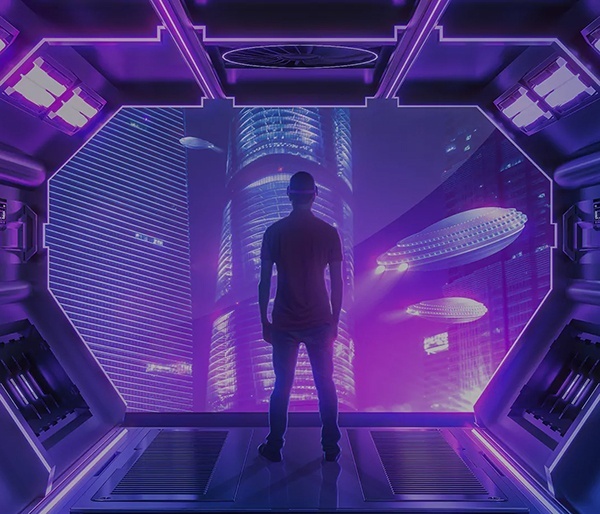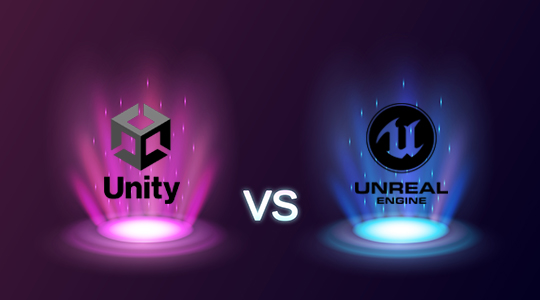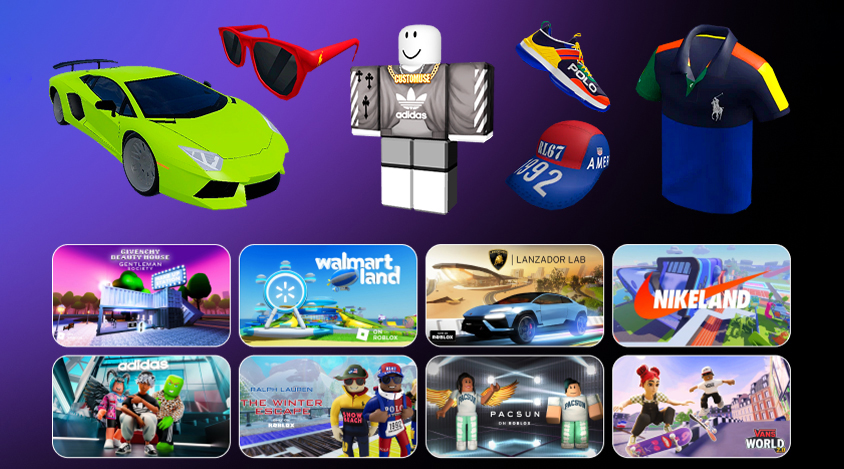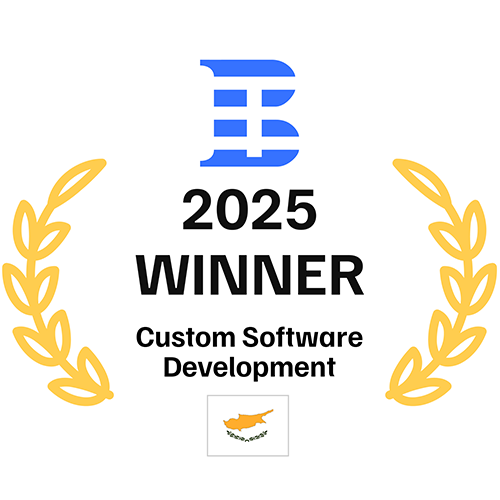The booming metaverse trend continues to shake the industry, gradually defining its future. With the advent of Web3, more present-day companies are aiming to build their own metaverse to be able to compete with giants like Meta (previously Facebook). But before you dive into the metaverse development, you’ll need a platform like Unity.
As a game engine and 3D world building software, it’s packed with multiple functions that significantly simplify the creation of your first Unity software metaverse. Without a doubt, it’s not the only tool you might need, but Unity serves as the ultimate software where you build your virtual environment brick by brick out of all the 3D assets and models you have.
Since the rebranding of Facebook to Meta, almost every metaverse development company today pursues to either build its own three-dimensional virtual world or provide services for others to achieve this goal. This article will answer the fundamental questions of why and how to create your Unity metaverse. Read on for more valuable insights!
The Metaverse Phenomenon: Definitions, Market Insights, Forecasts
In order to learn what the metaverse is, master metaverse Unity software, and start reaping the benefits of this initiative, you might want to dig into theory just for a second. By definition, the metaverse implies a certain 3D virtual environment accessed by a respective headset where users can interact with one another, buy or sell items as NFTs, play, live, work, and so on, simulating real life.
From a business perspective, since metaverses are built by companies specialized in technologies surrounding Web3, they expect financial profit in the form of revenue from owning a large-scale 3D world replete with numerous activities. Therefore, the metaverse for business is almost a bottomless well of commercially successful opportunities, including integrated third-party services, subscriptions as well as buying or selling fees, etc.
Nowadays, the industry is heavily betting on so-called dApps (decentralized applications), which account for software run on a blockchain or P2P network uniting multiple computers. As a rule, these are built on the Ethereum platform. The role of cryptocurrency, non-fungible tokens (NFTs), and blockchain in the existence of metaverses is incredibly significant since immense 3D environments need to be secure as well as decentralized.
So, what benefits does blockchain technology provide to the metaverse?
- Decentralized and transparent software solutions;
- Reliable proof of ownership in the digital space;
- Interoperability (distributed system with unified protocols and interfaces);
- Impossibility of losing valuable customer or corporate data;
- Improved digital collectibility for end-users.
The connection between the metaverse and Unity is that your developers feel more flexible if equipped with such a versatile tool enabling them to create massive 3D worlds, let alone integrate crypto wallets and blockchain. According to Statista, the global metaverse market revenue has reached almost $48bn in 2022, foreseen to surge up to $679bn by 2030. Good news for those currently building their metaverses, right?
What Is Unity In the Metaverse and How to Create One?
Now, as you know the relationship between Unity and the metaverse, it’s time to reveal the role of game engines in building 3D environments and how you can create one with the help of either your in-house resources or an outsourcing company. In case you, say, intend to create an enterprise metaverse, you’ll definitely require a team of reliable Unity developers who know the industry inside out.
Conceptually, the role of Unity in helping companies build their own metaverses is pretty straightforward. Since the metaverse is nothing more than a three-dimensional virtual environment, it has to consist of rendered 3D models. Well, as a platform meant for creating video games, metaverse Unity software is exactly what the doctor ordered — it’s a workspace where you can add, edit, and move around 3D assets either created specifically for your project or downloaded from Unity Asset Store.
In terms of building your metaverse, Unity 3D is where you:
- Open up your project;
- Create a scene;
- Fill it with assets, arranging them the way you want your world to look;
- Adjust lighting and shading to ensure the visual effect that fits your 3D world;
- Write C# scripts to enliven the metaverse.
Once your 3D environment is enriched with assets, animated, and programmed, it’s time to create either ready-made avatars or develop an automated avatar generator. As soon as your metaverse in Unity looks as if it were an actual world, you can integrate blockchain and crypto wallets so that your metaverse visitors are able to buy or sell NFTs.

Advantages of Using Unity for Metaverses Compared to Unreal Engine
Beyond question, creating a metaverse with Unity isn’t the only option. You can also use other game engines, such as Unreal Engine. Nowadays, internet debates titled “Unity vs. Unreal” continue to spread across social media and news websites. So, what is a better option for you? Let’s reveal the mystery by comparing the two game engines side by side.
Unity
- Decent graphics
- C# programming language
- Visual scripting referred to as Bolt
- Vast developer documentation
- Tons of free guides and tips
- Huge supporting community
- User-friendly interface
- Low entry threshold
- Free for commercial use until your project earns more than $100k
- Massive Asset Store
Unreal Engine
- Supreme-quality visuals
- C++ coding system
- Visual scripting called Blueprints
- Sufficient developer documentation
- Enough amount of guides
- Good community of developers
- Slightly overwhelmed UI
- Higher entry threshold for beginners
- Entirely free for learning or commercial purposes until your product earns more than $1m
- Decent UE marketplace
As you can see, Unity and metaverse may prove an excellent pair when it comes to creating a high-quality metaverse on a relatively low budget with a giant asset store at hand as well as a low entry threshold for developers. Hence, if you don’t aim at the highest quality of graphics, you can opt for Unity, as it has everything you may ever need to create a metaverse.
Consequently, having a pack comprising skilled 3D artists and coders as well as Unity software and metaverse under development, you can quickly integrate a blockchain of your preference, then release the product on the market. Still, before doing so, check out the most evident downsides of choosing Unity, just in case.
Drawbacks of Choosing Unity to Build Your Metaverse
Like any other software out there, your Unity engine for the metaverse comes with a bunch of disadvantages you’ll have to accept if your priority is a quick and cost-efficient development. Nevertheless, it’s better to keep them in mind at any rate. Here are the most widespread cons of developing with Unity:
- Some documentation for developers may be outdated;
- Difficult prefab editing functionality;
- The absence of external code libraries;
- The visual editor limitations;
- Relatively poor physics support.
Ultimately, as you develop your Unity 3D metaverse, consider these drawbacks, though they can quickly be overshadowed by all the advantages this game engine offers.
Final Tips On How to Build a Metaverse With Unity
The first and one of the most apparent tips in building your Unity technologies metaverse is to use the native Asset Store. Even though you may have a bunch of expert 3D artists, you can still use either free or paid assets from the in-built marketplace whenever it’s necessary to remove the load from your workforce. Some models can be turned into prefabs to be used and reused as frequently as you desire.
If, for example, some assets found in the store don’t fit the overall design, you can edit them in 3D editing software like Blender, Autodesk Maya, or 3ds Max. Whenever there’s an opportunity to cut the cost, you should go for it. Of course, there are also some downsides to this approach, as your metaverse might turn into a collection of someone else’s models. That’s why you should be careful using them. In other cases, we’ve got a new tip.
To create a metaverse with Unity, you should have a clear idea in your mind about what kind of 3D world you want. Then research the market, get familiar with all the development documentation, and hire a team of professionals.
Finally, the last tip implies referring to post-processing effects. Shaders, lighting, haze, rain, and other essential elements of metaverse design are great, but the absence of post-processing aspects can make your 3D world look cheap. Hence, it’s more beneficial to rely on the shoulders of professionals in order not to lose track of something crucial.
DeFi VR World — A Unity Metaverse You Want to Visit

Program-Ace has built the DeFi VR world metaverse for its client with an ambition to combine such innovations of Wefb3 as blockchain, NFT, social networking, and more. From this case study, you’ll learn how we’ve built this 3D virtual world, what challenges we encountered, and in what way our team resolved them.
Program-Ace as Your Metaverse Architect
Although it may sound simple, today, only an exclusive software development service provider can offer a top-notch quality of the metaverse. So if you are after a Unity3D metaverse, a better option is to get a partner.
When you entrust your Unity metaverse development to an experienced company like Program-Ace, you significantly save costs because an outsourcing studio already has everything at hand. Professional 3D technical artists, UI/UX designers, blockchain experts, NFT specialists, and metaverse Unity developers.
To obtain all the benefits of metaverse development, just contact us and discuss your upcoming project with qualified developers.























